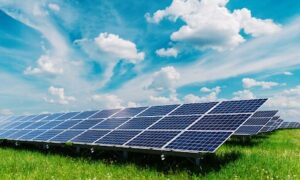Thinking about going solar? Before you commit to installing solar panels, it’s crucial to consider a few key factors. As a homeowner, understanding the basics will help you make an informed decision and maximize your investment.
One important aspect is your roof’s condition and exposure to sunlight. Make sure your roof is in good shape and ideally faces south to capture the most sunlight throughout the day. This can significantly affect the efficiency of your solar panels.
Another critical factor is cost and potential savings. While the initial investment might seem high, solar panels can significantly reduce your electricity bills and even increase your home’s value. Plus, there are often government incentives and rebates available to offset the upfront costs.
Assessing Your Solar Potential and Energy Needs
Before jumping into solar panel installation, it’s essential to analyze your energy needs and evaluate how much sunlight your home receives. This helps ensure that you maximize the benefits of your investment.
Understanding Your Electricity Bill and Energy Habits
Take a close look at your electricity bill to understand how much energy you use. Most bills show your energy usage in kilowatt-hours (kWh) over a month or year. By noting seasonal variations, you can identify peak usage times.
Think about your daily habits and consider appliances that contribute significantly to your energy consumption. Items like HVAC systems, refrigerators, and washing machines are often the biggest energy users.
Use online energy calculators to estimate your average daily and annual energy usage. This helps you determine the number of solar panels needed to meet your energy requirements.
Evaluating Your Home’s Sunlight Exposure and Roof Condition
Check how much sunlight your home receives throughout the day. The amount of sunlight is crucial for efficient solar panel performance. A south-facing roof generally provides the best exposure.
Observe any potential obstructions such as trees or tall buildings that might cast shadows. Trees, especially, can significantly reduce sunlight exposure if they block your roof.
Inspect your roof’s condition and make sure it’s structurally sound. Solar panels are heavy and require a sturdy, good-condition roof. It’s often best to address any necessary roof repairs before installation to avoid future issues. Note that different roofing materials can impact installation difficulty and costs.
Financial Considerations and Incentives
Investing in solar panels can lead to significant long-term savings on your energy bills, but it requires careful financial planning. Explore financing options and take advantage of available incentives to make the process more affordable.
Estimating the Initial Cost and Long-Term Savings
The initial cost of installing solar panels can be significant. It may include expenses for equipment, installation, permits, and other associated fees. However, the investment starts paying off through reduced electricity bills.
- Equipment & Installation: Panels, inverters, mounting hardware, labor
- Permits & Fees: Local government permits, utility connection fees
Over time, your solar system can save you a substantial amount of money. Calculate your potential savings based on your current electricity bill and projected energy usage.
Exploring Financing Options and Tax Incentives
Several financing options can help you manage the upfront cost of solar panels. You can opt for solar loans, leases, or power purchase agreements (PPAs).
- Solar Loans: Borrow money to pay for the system and repay it over time.
- Leases/PPAs: Lease the system or buy the energy it produces for a lower rate.
Federal tax credits, such as the Investment Tax Credit (ITC), can significantly reduce installation costs. Many states also offer local incentives and rebates.
Understanding Net Metering and Solar Renewable Energy Certificates
Net metering is a billing mechanism that allows you to sell excess electricity produced by your solar panels back to the grid. This reduces your electricity bill by crediting you for the surplus energy.
- Energy Credits: Earned for excess energy fed to the grid
- Billing Mechanism: Reduces your monthly energy costs
Solar Renewable Energy Certificates (SRECs) represent the environmental benefits of your solar energy production. You can sell these certificates to utilities, providing an additional income stream.
- SREC Programs: Vary by state
- Selling SRECs: Can offset installation and maintenance costs
Choosing the Right Solar Equipment and Installer
Choosing the right solar equipment and installer is crucial for efficient solar power generation, longevity, and cost-effectiveness of your solar energy system. It involves selecting suitable solar panels and inverters, partnering with reputable solar companies, and considering best battery storage options.
Comparing Types of Solar Panels and Inverters
When going solar, you need to decide between monocrystalline and polycrystalline solar panels. Monocrystalline panels are more efficient and have a sleeker design, while polycrystalline panels are usually less expensive but also less efficient.
Another key component is the solar inverter, which converts DC power from the panels into AC power for your home. There are three main types: string inverters, microinverters, and power optimizers. String inverters are common and cost-effective. Microinverters optimize performance at the panel level but are more expensive. Power optimizers provide a balance by optimizing each panel’s output while working with a central inverter.
Selecting a Reputable Solar Company and Understanding Their Offerings
A reliable solar installer can make a significant difference in the quality and performance of your solar panel system. Look for solar companies with good reviews, proper licensing, and solid warranties.
Understanding their offerings is essential. Some companies offer complete packages, including system design, maintenance, and monitoring. Be clear on what the solar panel installation includes and what you may need to source separately. Ask about the brands they use and any partnerships they have with solar panel manufacturers or efficient solar exporters. Tesla Solar, known for their Tesla Solar Roof, is one example of a reputable provider.
Considering Solar Batteries and Energy Storage Options
Including battery storage in your solar energy system can be valuable, particularly in areas with unreliable grids or high electricity costs. Batteries store excess energy produced during the day for use at night or during power outages.
Tesla Powerwall is a popular option, but other brands like LG Chem and Enphase offer competitive solutions. Evaluate warranty terms, lifespan, and capacity when choosing a battery. Energy-efficient batteries can significantly improve your system’s return on investment. Investing in good quality, reliable batteries ensures that you maximize your solar panel system’s potential and maintain power stability.
Understanding the Installation Process and Maintenance
Installing solar panels involves several key steps and considerations to ensure proper setup and long-term functionality. These include securing necessary permits, managing installation, and ongoing maintenance to maximize efficiency and reduce your electric bill.
Preparing for Installation: Permits and Inspections
Before installing solar panels, acquiring the necessary permits is crucial. This process usually involves checking local zoning laws and building codes.
You might need to submit a detailed site plan and electrical wiring diagram to your local planning department. Securing permits and scheduling inspections can take several weeks, so start early. Failing to get the proper permits can result in fines or having to remove the panels. Policies can vary by location, so consult your installer for guidance specific to your area.
Navigating the Installation Day and Post-Installation
On installation day, your solar provider will set up your panels, inverters, and electrical wiring. It usually takes 1-3 days, depending on weather conditions and roof complexity.
After installation, you’ll need an inspection from your local utility or government body to ensure everything complies with safety standards. Once approved, your system can connect to the utility grid.
After this, regular maintenance is required to keep your system running efficiently. Clean your panels once or twice a year to remove dust and debris. Also, monitor your system for shading issues and contact a professional if you notice a drop in performance.
Enjoy the benefits of clean energy, reduced electric bills, and possibly earning rebates or credits for excess energy produced.



































